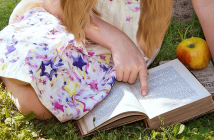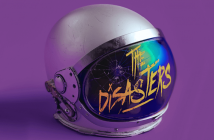When I was a tween, TV and movies about teen culture seemed to have one purpose: to explain what was “cool” and what wasn’t. In , the Pink Ladies were cool; Patty Simcox was not. In John Hughes’s films like , jocks and princesses were cool, geeks and freaks were not. In the years leading up to high school, I moved every couple of years, so I had the chance to reinvent myself each time. I used these examples as templates, but still, my reinventions failed. I always ended up being the actual me, the red-haired new kid in town with a weird vocabulary, not some reinvented me.
Through all our moves, one thing was constant: each of our homes was filled with books, and I plowed through them all. I read the Sweet Valley High books full of crazy plots involving blondness, bad boys, bomb scares, cults, comas, and so on. Sweet Valley taught me how to love a series, but I moved on pretty quickly. I found the Dark Forces books about ouija boards, tarot cards, and astral projection that scratched my literary itch for the dark side and fostered my love for books about the paranormal.
I stole my older sister’s Judy Blume books like Forever and Are You There God? It’s Me, Margaret. I fell in love with Blume’s characters and stories but also read for information about periods, first love, masturbation, and sex. I remember the revelation that books could be references in novels’ clothing chock full of information that helped me feel normal.
My family’s final move was from Minnesota to Scottsdale, Arizona in 1984. The 80s were wild. My mom and I went to the mall our first week in Scottsdale and saw a woman wearing a full-length fur coat and diamonds over cut-off shorts and a tank top, smoking from a Holly Golightly-style gold cigarette holder. What was this place?
Then, I read Less Than Zero by Bret Easton Ellis. Oh my god, that book. Ellis’s stripped-down style mirrored what I saw in my new Scottsdale culture: the disconnection of my friends with their parents, the malaise of wealth, and the culture of consumption.
I wrote in a daily journal during those years, and when I started writing YA six years ago, I read those entries to jump back into my own young-adult mind. In high school, I struggled to fit into a world that I didn’t understand while trying to act like mansion parties on mountains and kids driving Bentleys to school were perfectly normal. My first YA manuscript placed my characters in that culture of aloofness in a super-rich world of absent parents. My main character was uber-cool, everything I wanted to be when I was a displaced teen in that world.
That manuscript landed my first agent, but the book, heartbreakingly, didn’t sell. That was a tough experience, but when I read that manuscript now, I get it. Characters based on a kind of personal wish fulfillment don’t ring true. “Coolness” isn’t real, despite those early books and movies that shaped pre-teen me. Perfection doesn’t resonate, and I’m pretty sure that the high school kids around me that seemed perfect at the time didn’t feel perfect either.
I’ve spent my adult life in high school as a teacher, and I know that teens don’t fall into Hughes-style categories. They aren’t geeks and jocks, and they don’t see each other in those limited ways either. Yes, teens have talents and activities, and they dedicate a lot of their time to those pursuits, but each individual is so much more than an athlete, a dancer, a cosplayer. I know this, but when I first started writing, I fell back into those tropes I learned young.
To write my debut novel Natural Disasters, I had to dig into what I see everyday instead of falling into false teen stereotypes deeply imbedded since I became a reader. My main character Melanie is a competitive swimmer, and her neighbor Jared, plays football. For these two characters, being athletic isn’t a monolithic social label like “jock.” It’s a desire for accomplishment. And being a daughter or a son isn’t always simple. What happens when one learns their parents are far from perfect? Jared is Latino, and that means something different to him and to different people in his life, depending on their prejudices.
Reading YA as a teen shaped how I wanted to be. But writing YA now, based on what I see in the teens around me, shapes how I want the world to be: a collection of multi-dimensional people who see each other’s coolness in so many ways. That’s the kind of world I want to write.



